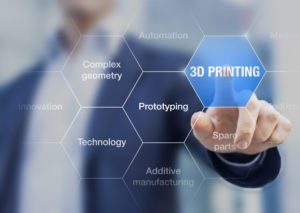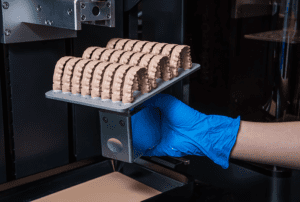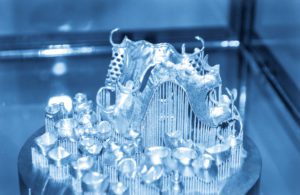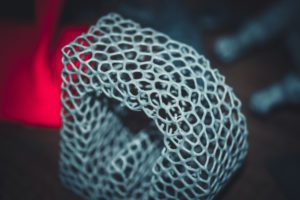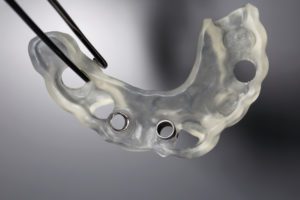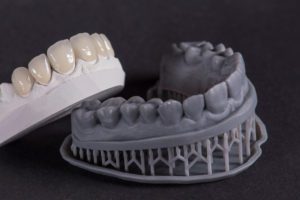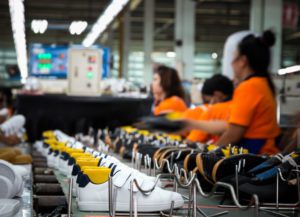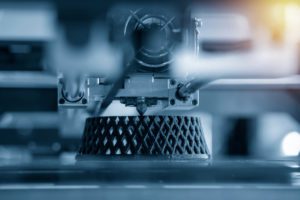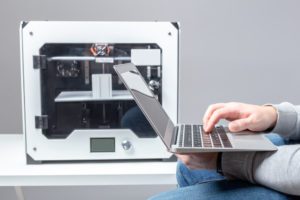Four Applications of Rapid Prototyping with 3D Printing
3D printing has many rapid prototyping applications, allowing companies to accomplish more in less time without sacrificing product quality. Today’s 3D printing systems require no tooling and support a broad range of materials, so designers can enable rapid functional prototyping and make faster transitions to full-scale manufacturing.
Read More3D Printing in Dentistry: Outsourcing, Bringing In-house, or Both?
3D printing technology is transforming the dental industry for providers and patients. Both dentists and orthodontists have been leveraging 3D printers to create durable, customized appliances with increased frequency year…
Read MoreSLA vs. DLP 3D Printing
Today, the 3D printing field has advanced in accuracy, product complexity, and the number of available processes. Companies can scale the production of complex products to high volume using two processes: stereolithography (SLA) and digital light processing (DLP).
Read MoreInnovative 3D Manufacturing Technologies to Watch: The Rise of Polymer 3D Printing
While COVID-19 brought chaos last year to manufacturing and supply chains, it also fueled innovation and new perspectives on how goods are produced and distributed globally. As wait times for…
Read MoreFDM vs. DLP 3D Printing
Two common 3D printing processes are fused deposition modeling (FDM) and digital light processing (DLP). Each of these 3D printing processes is best suited to specific product applications. Anyone interested in using 3D printing for their next product should understand the differences between FDM vs. DLP 3D printing. DLP processes and systems enable the manufacturing of products like dental appliances, medical devices, and footwear. With greater speed, better surface finishing, and isotropic material properties DLP may be a better choice for companies looking to decrease product development time, de-risk manufacturing operations, and create unique business models.
Read MoreThree Benefits of a 3D-Printed Dental Surgical Guide
3D printing dentistry solutions make it easier to produce custom products like dental prosthetics, implants, and surgical equipment such as guides. Surgical guides are becoming a standard tool to assist implant procedures, reduce surgery duration, and reduce the risk of complications. With advanced 3D printing systems, dental surgical guides are more affordable and accurate than ones made with traditional processes.
Read MoreApplications of 3D Printing in Dentistry
With the increasing availability of advanced materials for 3D printing, the range of printable dental appliances continues to expand. Applications of 3D printing in dentistry already include implants, models, guides, surgical tools, and PPE. Dental care providers utilizing such applications are enabling faster, more responsive service and better patient care.
Read MoreHow to Automate Footwear Manufacturing
In recent years, advancements in 3D printing technology are streamlining the manufacturing process. Footwear companies are leveraging 3D printers to optimize operations, enabling fully-functional prototypes and increased design freedom. 3D printing improves the footwear manufacturing process with greater automation, and 3D printed footwear is projected to globally generate over USD 1 billion by 2023 and USD 6.5 billion by 2029.
Read MoreGuide to the Ideal Additive Manufacturing Process
Additive manufacturing is often associated with low-volume production or prototyping. Some 3D printers are developed for the sole purpose of rapid prototyping. Still, innovations in 3D printing technology have made high-volume production both feasible and often the best solution for accelerating a new product to market. 3D printing has no tooling costs and very few design limitations. Companies can implement 3D printing solutions from innovation through production, eliminating certain drawbacks associated with traditional manufacturing.
Read MoreWhat is 3D Printing, Additive Manufacturing, and Rapid Prototyping?
Dentists, aerospace engineers, footwear manufacturers, and other industries utilize 3D solutions to streamline production processes, expand design possibilities, create better-performing products, and enable a more resilient supply chain.
Read More